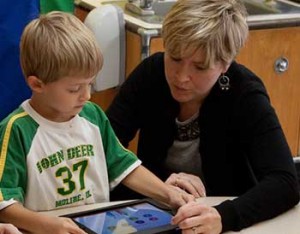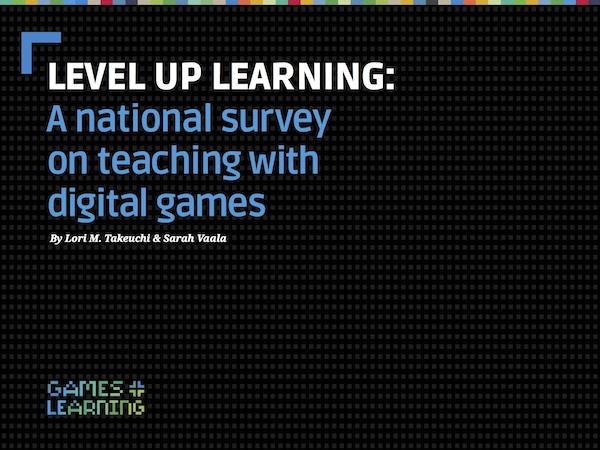
This fall, students across the country walked back through school doors. Each child undoubtedly had his or her own unique summer, possibly filled with camps, vacations, or just time to relax with friends and family. However, it is very likely that one shared element of each child’s summer vacation was ample time to spend with media and technology, whether it was the television, smartphones, tablets, or computers.
While one might assume the end of the summer means students spend less time using technology and consuming media, we know that technology is becoming more and more ubiquitous in the lives of young people, who may have cell phones, iPads, and laptops in their bookbags right next to their spiral notebooks and pencils. In addition, many teachers have considered the benefits of incorporating technology into their classrooms and lesson plans, and have taken steps in doing so.
In preparation for our second annual survey of teachers and digital games, we have conducted a Comparative Analysis of National Teacher Surveys, which includes five national surveys of K-12 teachers released within the last 18 months. While each of these surveys has its own set of specific research goals, all surveys poll teachers on their perceptions of technology and its implications for or integration into the classroom. Alongside the Joan Ganz Cooney Center’s 2012 teacher survey, the analysis includes survey reports from PBS LearningMedia (2013), Bill & Melinda Gates Foundation (2012), Common Sense Media (2012), and Pew Research Center’s Internet & American Life Project (2013). We prepared this analysis for the purpose of gaining a deeper understanding of current teacher practices, beliefs, and barriers surrounding technology use in the classroom. In addition, we hope that viewing these surveys side-by-side can assist in revealing gaps for future research.
Each high-profile survey presents a unique perspective and teacher population, and the surveys collectively add to a greater conversation about the benefits and challenges of technology as it relates to the education of today’s digitally connected children. While the goals and research questions for each survey are diverse, there are several common themes and findings across surveys. For example, each survey examined teacher comfort level with technology, to some extent. Whether the individual survey explored factors that contribute to the level of confidence with technology, or how the level of comfort affects the frequency of technology use in the classroom, together these findings present a more comprehensive picture of teacher experience. Surveys also inspected the degree to which teachers are receiving technology training, and how teachers feel this training can influence technology integration.
Again, we hope that this analysis helps to reveal directions that future research could possibly take. The analysis features a cross-survey synthesis that aims to begin this process. For instance, across the five surveys, teachers were often asked how they feel students are benefiting from technology use, and which skills they believe students can potentially develop for learning. However, in their answers, teachers pointed more often to high-level developmental skills such as collaboration, prosocial behavior, and motivation. Very rarely did teachers cite specific learning from technology use as it relates to academic subjects. While teachers are often excited to have technology in the classroom, and are optimistic about its benefits, it seems they need a bit more concrete proof that it directly affects academic subject achievement. Perhaps future research could ask teachers to make direct connections between skills developed through technology use and how it impacts understanding and learning within academic subjects.
With these informative reports from several organizations in mind, we are excited to administer the second annual survey of teachers and digital games this fall. As new reports about teacher experiences with technology integration arise, we are interested to see the ways in which teacher attitudes evolve over time.

